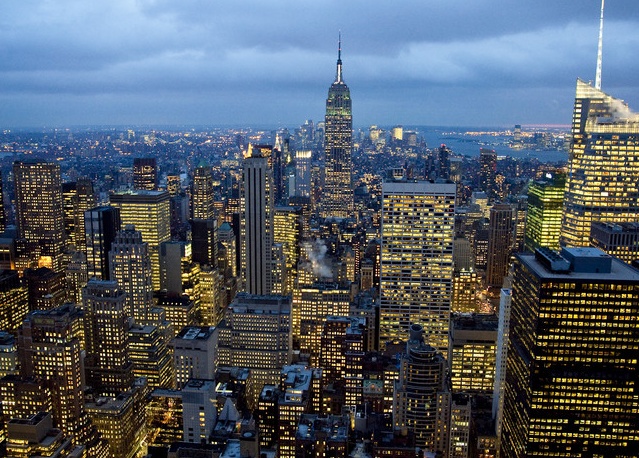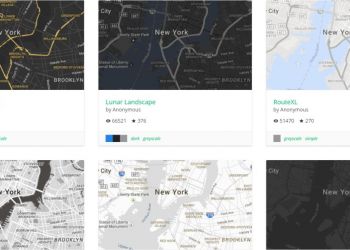马上注册,结交更多好友,享用更多功能,让你轻松玩转社区。
您需要 登录 才可以下载或查看,没有账号?立即注册
×
BBC News的文章在试着引导未来都市样貌的思考,以问句作为开头“想像一下,未来的城市裡,你会看到乾净的街道,飞行的汽车以及由机器人来做所有的工作吗?”,文章从Greenification(绿化)、Nerve centre(神经中心)、Crowdsourcing(众包) 三件事情铺陈。

当中的Crowdsourcing(众包)似乎比较难以理解,从wikipedia上的解释如下: 众包(英语:crowdsourcing)是网际网路带来的新的生产组织形式。《连线》(Wired)杂誌记者Jeff Howe于2006年发明的一个专业术语,用来描述一种新的商业模式,即企业利用网际网路来将工作分配出去、发现创意或解决技术问题。通过网际网路控制,这些组织可以利用志愿员工大军的创意和能力——这些志愿员工具备完成任务的技能,愿意利用业余时间工作,满足于对其服务收取小额报酬,或者暂时并无报酬,仅仅满足于未来获得更多报酬的前景。尤其对于软体业和服务业,这提供了一种组织劳动力的全新方式。 众包是一种分布式的问题解决和生产模式。问题以公开招标的方式传播给未知的解决方案提供者群体。用户(这里指众包里的“众”)典型地组成在线社区并提交方案。群“众”还要审查方案,发现最好的。这些最好的方案最后由最先提出问题的一方(众包人,crowdsourcer)所有,并且群“众”中胜出的个人有时会被奖励。有时,这些工作会有不错的报酬,无论是金钱上的、奖励上的或者只是名声和知名度。另外一些情况,胜出者会有智力上的满足感。众包可以通过业余人士或志愿者利用他们的空余时间提供解决方案,或者让专家或小型企业从无人知晓到初具规模。 How will our future cities look? By Jane Wakefield Technology reporter Imagine a city of the future. Do you see clean streets, flying cars and robots doing all the work? Or perhaps your vision is more dystopian, with a Big Brother-style authoritarian regime, dark alleys full of crime, and people forced to live in hermetically sealed pods because war or some other disaster has rendered whole swathes of the city unliveable. No-one really knows what the future holds, but the reality now is that our urban spaces are overcrowded and polluted. Almost half of the world's population currently lives in cities, and by 2050 that is projected to increase to 75%, but what kind of city will they be living in? The time is ripe, say experts, to start designing smarter urban environments, both new cities needed to sustain an ever-growing population, and retro-fits on the ones that we have lived in for centuries. Greenification If the cities of the past were shaped by people, the cities of the future are likely to be shaped by ideas, and there are a lot of competing ones about how such a futuristic urban space should look. Some of these revolve around the idea that smarter equals greener. Sustainability experts predict carbon-neutral cities full of electric vehicles and bike-sharing schemes, with air quality so much improved that office workers can actually open their windows for the first time. Visions of a green city often include skyscrapers where living and office space vie with floating greenhouses or high-rise vegetable patches and green roofs, as we try to combine urbanisation with a return to our pastoral past. Behind such greenification of cities lies a very pressing need. "Cities are reaching breaking point," says Prof David Gann, who heads up Imperial College's Digital Economy Lab. "Traffic jams are getting worse, queues longer and transport networks more prone to delays, power outages more common." 当我们试图将城市化与过去曾拥有的田园生活,绿色城市的愿景往往包括摩天大楼的居住及办公空间有许多在高楼层漂浮的温室空间或屋顶绿化加上蔬菜的种植。 在绿城市的背后其实是一种非常迫切的需要,英国帝国学院数位经济实验室的 David Gann教授说“城市发展已经来到临界点”,他甚至认为“交通拥堵越来越严重,排队时间更长,更容易出现延误的交通网络,停电将会越来越普遍。” Nerve centre The answer may lie with big data and the so-called internet of things, where objects previously dumb are made smart by being connected to each other. A network of sensors will, the argument goes, provide a host of data about how a city is performing. This will allow systems to be joined up and ultimately work more efficiently. The internet of things could herald new developments that will give privacy experts nightmares, such as Minority Report-style digital signage - billboards that communicate with passers-by with personalised messages. But it will also bring unimaginable new services to citizens, thinks Prof Gann. Technology companies such as Siemens, IBM, Intel and Cisco, believe that the cleverest cities will be those that are hooked into the network. IBM currently has 2,000 projects ongoing in cities around the world, from crime prevention analytics in Portland, Oregon, to water databases in California, to smarter public transport systems in Zhenjiang, China. Its flagship project is in Rio de Janeiro, where it has built an operations centre, which it describes as the "nerve centre" of the city. Built initially to help deal with the floods that regularly threatened the city, it now co-ordinates 30 government agencies and provides mobile applications to keep citizens in touch with potential accidents, traffic black-spots and other city updates. IBM目前有在世界各地的城市有2000个计画持续进行,从俄勒冈州波特兰市的预防犯罪分析、加州水资源数据资料库,到中国镇江的智慧型公共交通系统。 当中属于“旗舰级”的计划是在里约热内卢,在那里IBM已经建立一个营运中心,作为城市的“神经中枢”,最初是协助处理经常威胁着这个城市的洪水氾滥,现在则协调整合30个政府部门的合作,并提供移动应用软体,让公众随时获得隐藏性事故、交通拥塞点及城市最新状态的资讯。 Crowd-sourcing The fact that big corporations are becoming so heavily involved in designing city infrastructure has led critics to question how quickly such a city may, like the computer systems they are relying on, become obsolete. Saskia Sassen, co-chair on the Committee on Global Thought at Columbia University and a leading expert on smart cities, draws parallels with the office buildings of the sixties, which she describes as "low-ceiling places now standing sad and empty as advanced technologies render them useless". She is also concerned about privacy and the role that citizens will play in the grand plans of IBM and others. "When does sensored become censored?" she asks. IBM's Rick Robinson is quick to brush off concerns. "The behaviour of a city is about the behaviour of citizens. Unless systems can become the fabric of their lives, nothing is going to change," he says. Most of the projects IBM undertakes involve consulting with community groups as well as city councils, and any data-collecting schemes require the consent of users, he said. He points to a project the firm completed in Dubuque, Iowa, where households were offered access to information about their water consumption. The majority quickly changed habits and saved water when confronted with the data. Interestingly those also given access to their neighbours' information were twice as likely to make changes. The power of the crowd will be crucial to the cities of the future, thinks Carlo Ratti, MIT's head of Sense-able Cities. He sees a battle ahead between what corporations want to sell to cities and what citizens actually need. "Truly smart - and real - cities are not like an army regiment marching in lockstep to the commander's orders," he says. "They are more like a shifting flock of birds or shoal of fish, in which individuals respond to subtle social and behavioural cues from their neighbours about which way to move forward." As smart cities move from concept to reality, Ovum analyst Joe Dignan has a word of caution for those hoping to grab a piece of the action. "Companies produce videos of glass houses of lovely people doing Minority Report-style stuff, but show me how this will help people sitting in their council flat 20 storeys in the sky?" His words echo those of American author and urbanist Jane Jacobs who warned several decades ago: "Cities have the capability of providing something for everybody, only because, and only when, they are created by everybody." Those building the cities of the future may do well to heed that advice. FUTURE CITY PROJECTS Dolphin watching - in Dublin a scheme to monitor water quality in Galway Bay by counting marine life has inspired an app for fishermen and restaurants to see what the catch of the day will be Health care - in Honolulu a crowd-sourced scheme has collated where all the defibrillators are located in buildings around the city to offer immediate help if someone has a heart attack City pulse - Silicon Valley firm Screampoint has developed a city dashboard, which takes the pulse of the city from energy usage, to waste management, to the number of jobs available. Kansas has one, Amsterdam and Barcelona are considering getting one Predicting crime - AGT is working with cities around the world to create a picture of how safe a city is at any given time, using city-wide data and predictive algorithms Hug a tree - in Madrid there is a scheme to have citizens adopt a tree, to make them more aware of environmental needs Algorithmic apartment - at MIT a team of engineers are working on homes with robo-walls that can be moved, depending on need Data sharing - in Estonia people are able to plan better for their future, thanks to a system that links their state and private pensions in one place.
|  2W+地图免费样式,可自定义,随时更新1616 人气#资料综合
2W+地图免费样式,可自定义,随时更新1616 人气#资料综合 注意:注册建筑师助手小程序已改名考松果题1414 人气#玩转社区 | How To Play
注意:注册建筑师助手小程序已改名考松果题1414 人气#玩转社区 | How To Play 住房城乡建设部关于发布国家标准《生活垃圾1212 人气#规范法规动态
住房城乡建设部关于发布国家标准《生活垃圾1212 人气#规范法规动态 住建部发布《住宅项目规范》GB55038-2025,2525 人气#规范法规动态
住建部发布《住宅项目规范》GB55038-2025,2525 人气#规范法规动态